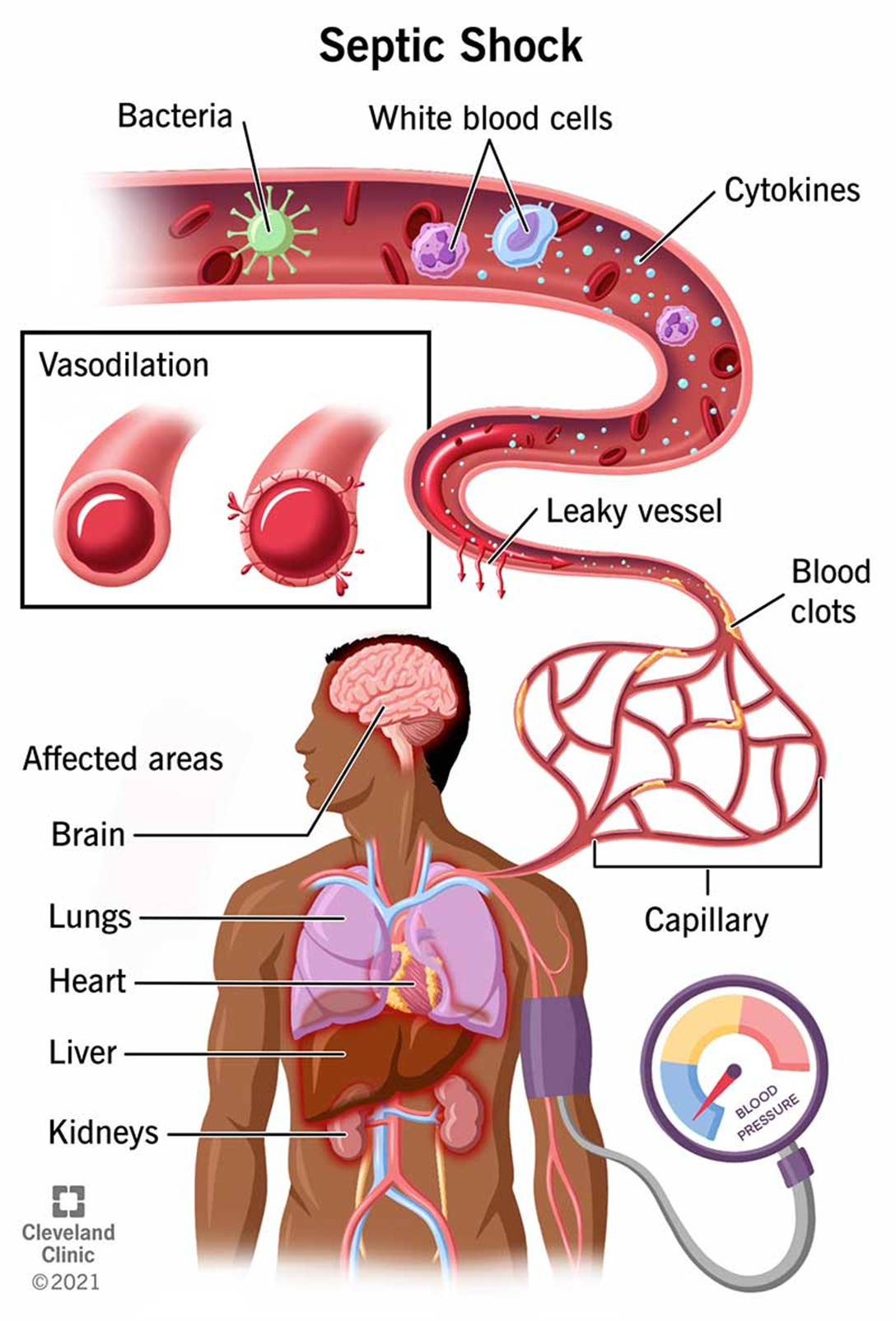A nurse is caring for a client who has a history of chronic obstructive pulmonary disease (COPD) and is receiving oxygen therapy at home. The nurse should instruct the client to report which of the following findings as an indication of oxygen toxicity?
Headache
Dry mouth
Increased appetite
Nausea
The Correct Answer is A
Choice A reason: Headache is a sign of oxygen toxicity, which is a condition that occurs when the client receives too much oxygen for a prolonged period of time. Oxygen toxicity can damage the lungs and other organs, and cause symptoms such as confusion, seizures, and respiratory failure. The nurse should instruct the client to report headache and adjust the oxygen flow rate accordingly.
Choice B reason: Dry mouth is not a sign of oxygen toxicity, but it could be a side effect of some medications or a result of dehydration. The nurse should instruct the client to drink plenty of fluids and use a humidifier or a nasal saline spray to moisten the mucous membranes.
Choice C reason: Increased appetite is not a sign of oxygen toxicity, but it could be a positive outcome of oxygen therapy, as it indicates improved oxygenation and metabolism. The nurse should encourage the client to eat a balanced diet and monitor their weight and nutritional status.
Choice D reason: Nausea is not a sign of oxygen toxicity, but it could be a side effect of some medications or a symptom of another condition, such as gastroesophageal reflux disease (GERD) or peptic ulcer disease (PUD). The nurse should instruct the client to take their medications as prescribed and avoid foods that trigger nausea, such as spicy, fatty, or acidic foods.
Nursing Test Bank
Naxlex Comprehensive Predictor Exams
Related Questions
Correct Answer is A
Explanation
Choice A reason: Broad-spectrum antibiotics are indicated for septic shock caused by bacterial infection, as they can target a wide range of pathogens and prevent further sepsis. Fluid boluses are also essential to restore the intravascular volume and improve tissue perfusion and oxygenation.

Choice B reason: Antipyretics and oxygen therapy are not sufficient to treat septic shock, as they do not address the underlying infection or the hypovolemia. Antipyretics may lower the temperature, but they do not eliminate the bacteria. Oxygen therapy may improve the pulse oximeter reading, but it does not correct the hypoperfusion.
Choice C reason: Vasopressors and blood transfusions are not the first-line treatments for septic shock, as they may have adverse effects on the cardiovascular system and the coagulation cascade. Vasopressors may increase the blood pressure, but they may also cause vasoconstriction and reduce the blood flow to vital organs. Blood transfusions may increase the hemoglobin level, but they may also increase the risk of fluid overload, hemolysis, and transfusion reactions.
Choice D reason: Corticosteroids and antihistamines are not indicated for septic shock, as they do not have any proven benefits and may have harmful effects on the immune system and the inflammatory response. Corticosteroids may suppress the adrenal function and increase the risk of infection. Antihistamines may cause sedation and dryness of the mucous membranes.
Correct Answer is ["A","B","C","D"]
Explanation
Choice A reason: This is a finding that the nurse should report to the provider. A pressure dressing is applied to the site of the catheter insertion to prevent bleeding and hematoma formation. If the dressing is saturated with bloody drainage, it indicates that the bleeding is not controlled and may lead to hemorrhage or infection.
Choice B reason: This is a finding that the nurse should report to the provider. Pulses of the extremity where the catheter was inserted should be equal to or stronger than the other extremity. If the pulses are diminished, it indicates that there is impaired blood flow to the extremity, which may be caused by arterial occlusion, thrombosis, or vasospasm.
Choice C reason: This is a finding that the nurse should report to the provider. The color and temperature of the extremity where the catheter was inserted should be similar to the other extremity. If the extremity is cool and pale, it indicates that there is inadequate perfusion to the extremity, which may be caused by the same factors as the diminished pulses.
Choice D reason: This is a finding that the nurse should report to the provider. Pain is an indicator of tissue damage or inflammation. The adolescent should have minimal or no pain after the procedure, as the site is numbed with local anesthesia. If the pain is present or increases, it indicates that there is a complication, such as bleeding, infection, or nerve injury.
Choice E reason: This is not a finding that the nurse should report to the provider. The apical pulse is the heart rate measured at the apex of the heart. It is a routine vital sign that the nurse should monitor after the procedure, but it is not a sign of a complication unless it is abnormal, such as too fast, too slow, or irregular. The nurse should compare the apical pulse with the baseline and the expected range for the adolescent's age and condition.
Whether you are a student looking to ace your exams or a practicing nurse seeking to enhance your expertise , our nursing education contents will empower you with the confidence and competence to make a difference in the lives of patients and become a respected leader in the healthcare field.
Visit Naxlex, invest in your future and unlock endless possibilities with our unparalleled nursing education contents today
Report Wrong Answer on the Current Question
Do you disagree with the answer? If yes, what is your expected answer? Explain.
Kindly be descriptive with the issue you are facing.
